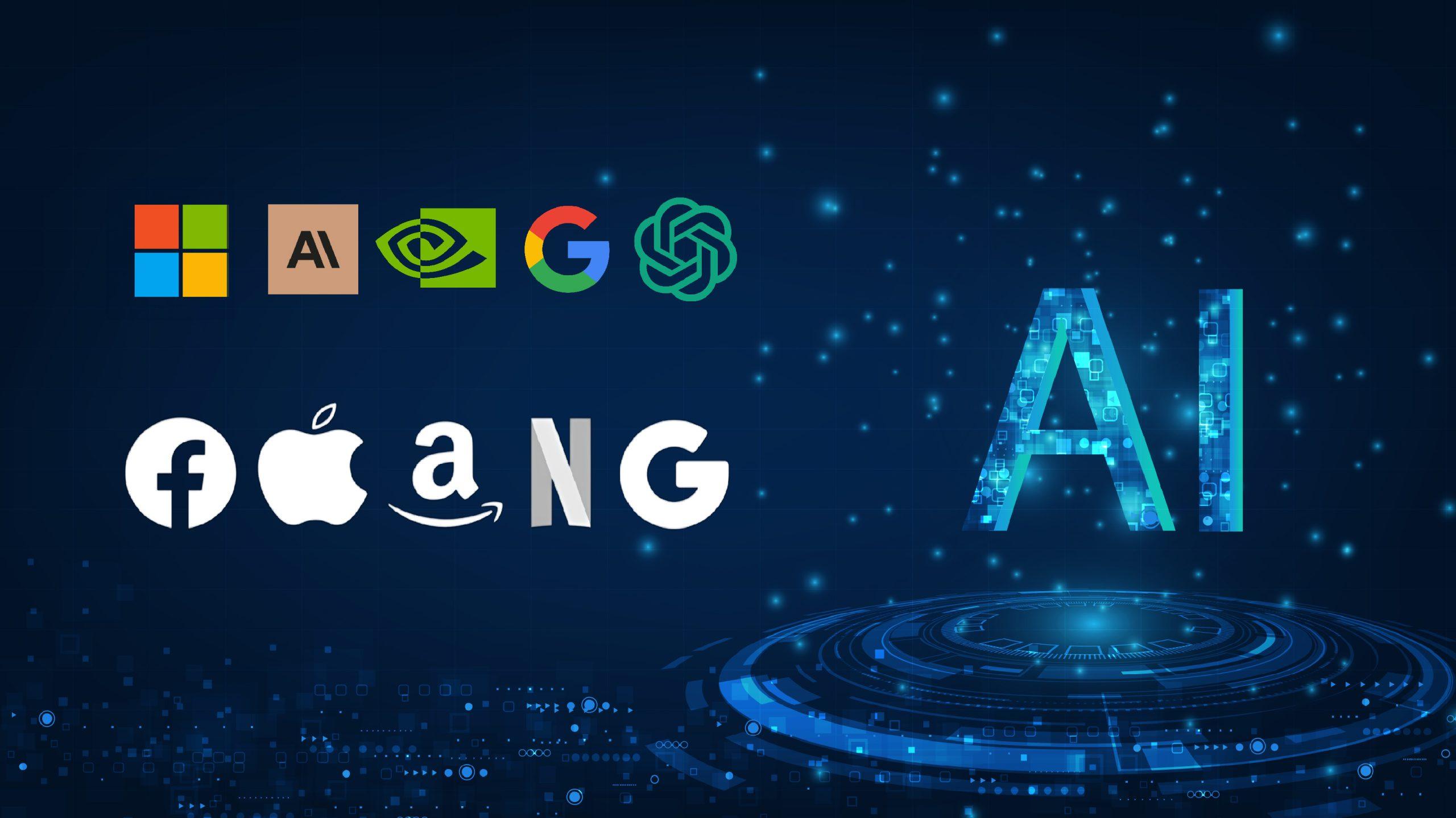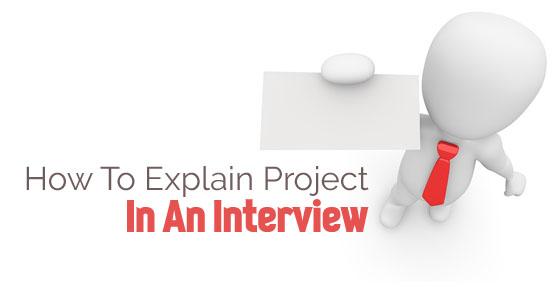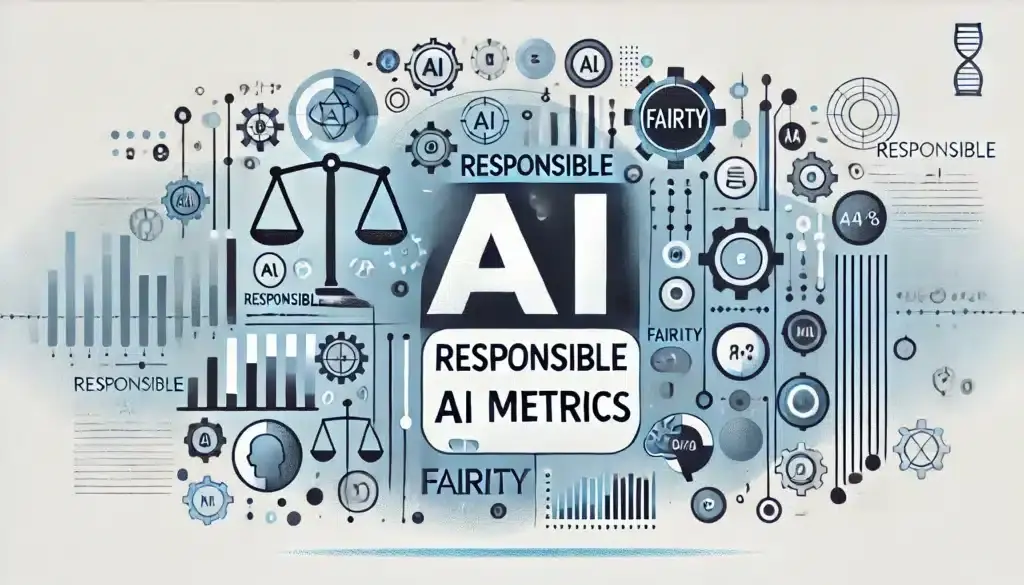Section 1 - The Meta-Structure Behind FAANG and AI Startup Interviews
Most candidates walk into interviews assuming each company’s process is entirely different.
They prepare for Google with data structures, Meta with systems, Anthropic with alignment theory, and OpenAI with model reasoning, without realizing something crucial:
All of these interviews are built from the same cognitive blueprint.
“Once you see the structure, you stop preparing for interviews, and start preparing for thinking.”
FAANG companies and AI-first startups may differ in style, culture, and pacing, but the way they design interviews follows a universal cognitive architecture that tests the same underlying capabilities.
Let’s decode that.
a. The Interview Framework Hidden in Plain Sight
If you strip away branding and vocabulary, every high-level engineering or ML interview, from Google to Hugging Face, follows a five-stage sequence designed to test range, reasoning, and resilience.
Here’s how it looks under the hood:
| Stage | What They Call It | What They’re Actually Testing |
| 1. Screening / Recruiter Round | “Intro chat” or “Initial call” | Communication clarity, motivation, alignment |
| 2. Technical / Coding Round | “Algorithmic” or “Applied coding” | Problem-solving logic, trade-off thinking |
| 3. Design Round | “System” or “ML pipeline” | Abstraction, scalability, end-to-end reasoning |
| 4. Behavioral / Collaboration Round | “Leadership” or “Culture fit” | Team empathy, reflection, adaptability |
| 5. Final / Onsite / Bar-raiser | “Cross-functional” or “Panel” | Consistency, decision quality, seniority of thought |
This five-part structure is remarkably consistent, not just across FAANG, but across AI-first startups like Cohere, Scale AI, OpenAI, and Anthropic.
The difference lies not in what they test, but in how they weight it.
b. FAANG Interviews: Testing Consistency and Scale
At FAANG companies (Facebook, Amazon, Apple, Netflix, Google), interviews are designed to measure repeatable excellence, whether you can perform under a mature, large-scale system where processes already exist.
FAANG values:
- Predictability: Can you consistently solve within constraints?
- System thinking: Can you design solutions that scale?
- Collaboration: Can you work cross-functionally and communicate precisely?
You’ll often hear FAANG interviewers say,
“Walk me through your reasoning step-by-step.”
That’s not a courtesy, it’s a test of structured articulation.
They’re evaluating if you can think modularly, not just code functionally.
FAANG interviews are built to simulate the engineering rigor of production environments, code reviews, design reviews, and data governance.
✅ Common FAANG interview patterns:
- Google: Heavy emphasis on abstraction and optimization.
- Amazon: Bias for clarity, simplicity, and “customer obsession.”
- Meta: Collaboration, speed, and iteration loops.
- Apple: Systems integration and attention to product quality.
- Netflix: Pragmatism and independent problem ownership.
FAANG’s structure is intentionally redundant but consistent, it ensures reliability in judgment across global teams.
Check out Interview Node’s guide “End-to-End ML Project Walkthrough: A Framework for Interview Success”
c. AI-First Startups: Testing Curiosity and Adaptability
Now, contrast that with AI-first startups like OpenAI, Anthropic, Hugging Face, or Stability AI.
Their interviews are built for a different kind of world, one that changes every month.
Where FAANG tests for scalability and control, AI-first startups test for fluidity and judgment.
Startups don’t care if you can quote algorithmic complexity from memory.
They want to see how you respond when there’s no clear documentation, no stable API, and no precedent for what you’re building.
“FAANG tests execution in structure.
Startups test exploration in chaos.”
✅ Common startup interview patterns:
- OpenAI: Focuses on reasoning and model intuition. (“How would you evaluate hallucinations in an LLM?”)
- Anthropic: Tests ethical reasoning and trade-offs. (“How do you balance accuracy vs. safety?”)
- Hugging Face: Emphasizes community thinking and open-source collaboration.
- Scale AI: Looks for operational pragmatism, can you ship usable ML quickly?
Startups compress behavioral and technical evaluation into fewer rounds, but each round is multi-dimensional.
For example, a single OpenAI “reasoning interview” can test your technical ability, communication, and ethical framing simultaneously.
That’s why candidates often describe AI-first startup interviews as “deceptively conversational.”
You think you’re chatting about AI ethics, but you’re being evaluated on logical clarity, empathy, and scientific integrity at the same time.
d. Pattern Recognition: What FAANG and Startups Have in Common
Despite stylistic differences, both FAANG and AI-first startups converge on the same core assessment loop:
- Can you structure chaos into clarity?
Think aloud, categorize uncertainty, and reason stepwise. - Can you balance depth with velocity?
Explain technical trade-offs without losing sight of impact. - Can you communicate like a collaborator?
Narrate your thought process clearly enough for others to follow. - Can you adapt your reasoning?
Adjust your framework when new information emerges.
If you learn to identify where these are being tested in each round, you stop preparing reactively, and start preparing architecturally.
Example insight:
When a Meta interviewer asks you to optimize system throughput, they’re testing the same mental flexibility that an OpenAI interviewer tests when they ask you to reason about LLM hallucination detection.
Different surface, identical structure: patterned reasoning under evolving constraints.
e. Why Recognizing Patterns Is a Competitive Edge
Interviewers love candidates who see beyond form.
When you can decode the structure of their interview, you start speaking their language.
For instance:
- When you begin an ambiguous design question with,
“Let me clarify scope and constraints first,”
you’re signaling FAANG-style clarity.
- When you end a coding challenge by reflecting,
“Here’s how I’d extend this to handle dynamic inputs,”
you’re signaling startup-style adaptability.
Both demonstrate that you’ve internalized the meta-patterns of evaluation.
And that’s rare.
“Most candidates prepare for questions.
The best prepare for patterns.”
Section 2 - Pattern #1: The “Reasoning Under Ambiguity” Round
No matter whether you’re interviewing at Google, Meta, or OpenAI, you’ll encounter one type of question that feels deceptively open-ended:
“There’s no one right answer. We just want to see how you’d think about it.”
That line should make your brain light up, because you’ve just entered a Reasoning Under Ambiguity round.
It’s not about writing perfect code or calculating an exact metric.
It’s about demonstrating that you can stay composed, structured, and intellectually agile when the problem has no defined edges.
“These questions don’t test knowledge. They test navigation.”
a. What This Pattern Really Tests
Reasoning-under-ambiguity rounds are designed to evaluate four fundamental traits that define great engineers and ML thinkers:
| Trait | What It Looks Like in Practice |
| Clarity | You ask the right clarifying questions before solving. |
| Structure | You think in frameworks, not scattered ideas. |
| Trade-Off Awareness | You can compare multiple valid paths objectively. |
| Composure | You stay calm when uncertainty rises. |
These traits apply to every role, whether you’re designing a recommender system at Meta or evaluating model bias at Anthropic.
At FAANG companies, this pattern often shows up as:
“Design a scalable ML system for personalized search.”
At AI-first startups, it may sound like:
“How would you detect and mitigate hallucinations in a generative model?”
Different problem space, identical structure:
You must reason clearly through unknowns, justify assumptions, and communicate decisions under incomplete information.
Check out Interview Node’s guide “How to Approach Ambiguous ML Problems in Interviews: A Framework for Reasoning”
b. How to Recognize This Round Instantly
Here are the telltale signs that you’re in a reasoning-under-ambiguity pattern:
- The interviewer gives minimal context (“You can make any assumptions you need”).
- There’s no fixed solution (“We’re just curious how you’d think about this”).
- Follow-up questions evolve based on your answers (“What if the data doubled? What if it’s streaming instead?”).
In short, they’re testing how you move when the floor shifts beneath you.
A typical flow might look like this:
- You clarify scope and constraints.
- You outline key components or phases.
- You compare options and make trade-offs.
- You adapt when new information is introduced.
Interviewers love when candidates display that “adaptive reasoning arc”, it mirrors real-world decision-making in complex ML systems.
c. How to Structure Your Response (The 4C Framework)
Top performers use what we call the 4C framework, a mental model to reason out loud under uncertainty.
| Step | Action | Example |
| 1. Clarify | Ask smart, boundary-defining questions. | “Can we assume the data is batch or streaming? Are we optimizing for latency or accuracy?” |
| 2. Categorize | Break down the problem into core buckets. | “We can approach this from three angles, data, modeling, and evaluation.” |
| 3. Compare | Explore alternatives and trade-offs. | “A transformer-based model may improve accuracy, but a lighter model would help latency.” |
| 4. Conclude | Choose a direction and justify why. | “Given user-facing latency needs, I’d start with a smaller model and progressively scale complexity.” |
This framework turns abstract chaos into conversational structure.
It shows interviewers that you can organize ambiguity, not drown in it.
d. Example 1 - FAANG-Style Ambiguity Question
Prompt (Meta): “Design a scalable feed-ranking system for millions of users.”
✅ Strong Answer (Reasoning Structure):
“Let’s clarify the scope first, do we assume the ranking is real-time or precomputed?
I’d break this into three stages:
1️⃣ Data collection and feature engineering,
2️⃣ Model training and scoring,
3️⃣ Online ranking and personalization.
Each has trade-offs, e.g., caching improves latency but risks staleness.
To balance both, I’d use a hybrid design: offline retraining every few hours and real-time re-ranking on engagement features.”
Why it works:
- It moves from macro (scope) → micro (implementation) logically.
- You demonstrate business-aware trade-offs (freshness vs speed).
- You narrate thinking without hesitation, structured and composed.
This is the “FAANG flavor”: analytical, modular, and scale-conscious.
e. Example 2 - AI-First Startup Ambiguity Question
Prompt (OpenAI): “How would you evaluate hallucination rates in a generative model?”
✅ Strong Answer (Reasoning Structure):
“I’ll start by clarifying the goal, do we define hallucination as factual inaccuracy or as deviation from prompt intent?
Assuming it’s factual inaccuracy, I’d design an evaluation loop:
1️⃣ Curate a human-labeled benchmark of ground-truth responses,
2️⃣ Measure divergence using automatic metrics (like fact-checking models),
3️⃣ Introduce human-in-the-loop auditing for high-risk prompts.
The key trade-off here is coverage vs accuracy, automation scales evaluation, but human review ensures precision.
I’d strike a balance using stratified sampling, more human checks where the model is uncertain.”
Why this shines:
- You define ambiguity clearly (“factual vs semantic hallucination”).
- You use both quantitative and qualitative reasoning.
- You handle uncertainty with measured curiosity, not panic.
That’s exactly what OpenAI or Anthropic looks for, intellectual humility paired with structured reasoning.
Check out Interview Node’s guide “Beyond the Model: How to Talk About Business Impact in ML Interviews”
f. The Hidden Skill: Narrating Confidence Under Uncertainty
The difference between average and exceptional candidates isn’t correctness, it’s confidence without arrogance.
Exceptional candidates narrate like this:
“I’m not entirely sure which metric you prioritize, but here’s how I’d approach the trade-off between coverage and latency.”
Average candidates either:
- Go silent (“Umm… maybe I’d use cross-validation?”), or
- Overcompensate (“It’s definitely X.”).
The first sounds lost. The second sounds rigid.
The third, measured, self-aware, sounds senior.
“Good engineers know what they know.
Great ones know what they don’t, and articulate it clearly.”
Section 3 - Pattern #2: The “Practical Coding” Shift
If FAANG interviews in the 2010s were built around algorithms,
today’s interviews are built around application.
LeetCode-style problems still exist, but their dominance is fading.
Instead, both FAANG and AI-first startups are moving toward practical coding interviews that evaluate your ability to reason, design, and debug in production-like contexts.
“The goal is no longer to test what you’ve memorized, but to see how you engineer under constraint.”
a. The Evolution: From LeetCode to Logic in Context
Not long ago, coding interviews were algorithmic marathons, reversing linked lists, balancing trees, or calculating shortest paths.
Those problems tested precision and recall of computer science fundamentals.
But in 2025, companies have realized that while algorithmic literacy is necessary, it’s not predictive of performance in modern ML or AI infrastructure roles.
Why? Because:
- ML engineers spend more time integrating APIs and data pipelines than implementing graphs.
- AI engineers debug distributed systems more often than binary trees.
- Real problems involve trade-offs, latency, and maintainability, not just big-O complexity.
Hence, the Practical Coding Shift, a move from “solve this puzzle” to “build this working component.”
“In FAANG, efficiency still matters.
In startups, clarity wins every time.”
Check out Interview Node’s guide “Cracking the Machine Learning Coding Interview: Tips Beyond LeetCode for FAANG, OpenAI, and Tesla”
b. The Modern Coding Pattern, “Build, Don’t Just Solve”
Here’s how the structure of coding interviews has evolved:
| Old Paradigm | New Paradigm | What Interviewers Evaluate Now |
| Abstract puzzles | Contextual problems | Engineering reasoning |
| Isolated functions | System components | Modular thinking |
| One solution | Multiple trade-offs | Decision clarity |
| Speed | Communication | Maintainability mindset |
In FAANG, the transition is gradual, you might still see a mix of algorithmic and applied questions.
At AI-first startups, it’s complete, real-world logic replaces textbook recursion.
Let’s see how it looks in both environments.
c. FAANG’s Coding Evolution: Structured Contexts
FAANG interviews still lean on algorithmic foundations, but increasingly, questions are anchored in data pipelines or production systems.
✅ Example (Amazon / Google):
“Given a stream of user click data, design a function that returns the top 10 most frequent items in real time.”
This looks algorithmic (heap, hashmap, etc.), but it’s actually data pipeline reasoning, testing whether you can design for scale and maintain state efficiently.
✅ Best Practice Response:
“For low-volume data, I’d use a min-heap and dictionary for frequency counting.
But since it’s streaming, I’d adapt with a sliding window aggregation and approximate counting like Count-Min Sketch.
This balances latency and memory usage, we trade exactness for real-time performance.”
Why it works:
- You combine theoretical rigor with pragmatic design.
- You show awareness of trade-offs, the holy grail of technical maturity.
- You narrate your logic out loud, keeping the interviewer engaged.
That’s the hallmark of the FAANG flavor, precision under structure.
d. AI-First Startups: Coding for Real Impact
Now, if you walk into an interview at OpenAI, Anthropic, or Hugging Face, you won’t be asked to reverse a list.
You’ll be asked to reason like an engineer building an actual product feature.
✅ Example (Hugging Face):
“Write a Python function that takes a text dataset and computes the average embedding similarity between consecutive entries using a transformer model.”
You’re being tested not on tokenization or cosine similarity, but on how you structure, optimize, and communicate through ambiguity.
✅ Strong Response Pattern:
“First, I’d clarify whether we’re using a pretrained model like sentence-transformers or a custom model, since that affects runtime.
Then I’d batch-encode the dataset to avoid O(n²) comparisons and use cosine similarity from a vectorized library.
For scalability, I’d parallelize batches or cache embeddings for re-use.”
Then, the pro move, summarize design intent:
“This approach trades minimal overhead for interpretability and reusability. In production, I’d monitor latency and memory per batch.”
That one line demonstrates systemic literacy, you think like a product engineer, not a student.
e. What Interviewers Are Actually Listening For
In modern coding interviews, your code is secondary.
What they’re really listening for is how you reason about engineering trade-offs:
- Correctness → “Did you understand the problem deeply?”
- Clarity → “Can others read and maintain your logic?”
- Trade-offs → “Do you optimize only what matters?”
- Narration → “Do you think aloud like a teammate, not a machine?”
The best candidates write fewer lines of code but explain why they made each choice.
That’s what makes your logic portable across different teams and companies.
“A great engineer’s value isn’t in solving fast, it’s in thinking sustainably.”
Section 4 - Pattern #3: The “End-to-End Ownership” Test
If reasoning under ambiguity reveals how you think,
then end-to-end ownership reveals what kind of engineer you are.
This is the round where interviewers stop asking what you can build, and start asking how well you can sustain it.
“Ownership isn’t about doing everything. It’s about seeing everything.”
a. What “Ownership” Means in Modern ML Roles
In traditional interviews, “ownership” used to mean being accountable for your code or your model.
In 2025, that’s no longer enough.
Now, ownership means understanding the entire ML system lifecycle, from data ingestion to business impact.
A true end-to-end ML owner can describe not just how they built something, but why it worked in production, and how they’d fix it when it doesn’t.
In this pattern, interviewers test whether you think like a system steward, not a model builder.
✅ The signals they’re looking for:
- You trace failure modes across data, modeling, deployment, and feedback loops.
- You talk about monitoring as much as training.
- You care about impact metrics, not just performance metrics.
- You say “we” more than “I.”
“Owning an ML system means knowing what happens after your Jupyter notebook closes.”
b. The Difference Between FAANG and AI-First Ownership Patterns
Both FAANG and AI-first startups test ownership, but their evaluation lenses differ.
| Dimension | FAANG | AI-First Startups |
| Focus | Stability, scale, reproducibility | Velocity, iteration, experimentation |
| Ownership Signal | Cross-team coordination | Rapid prototype-to-product transition |
| Metrics That Matter | Reliability, latency, SLA | Feedback loops, engagement, adaptability |
| Failure Mode Tested | Process breakdowns | Resource trade-offs |
In FAANG, ownership means:
“Can you design systems that scale predictably and can be handed off seamlessly?”
In AI-first startups, ownership means:
“Can you build something from scratch that doesn’t fall apart at first contact with reality?”
FAANG values systemic maturity, you respect process, scalability, and fault tolerance.
AI-first startups value creative resilience, you build fast, fail smart, and fix faster.
Both value visibility, your ability to communicate what’s happening across the stack.
c. The FAANG-Style Ownership Question
Prompt (Google): “Design an ML system to detect spam messages at scale.”
Here’s how an average candidate answers:
“I’d collect training data, train a classification model, and deploy it to flag spam.”
Here’s how a senior-level candidate answers, showcasing end-to-end ownership:
✅ Strong Answer:
“I’ll start by clarifying the scope: is this an offline or real-time detection pipeline?
Assuming real-time, I’d design a three-layer architecture:
- Ingestion: Data from messages flow through Kafka, enriched with metadata.
- Modeling: An online learning model trained incrementally using recent labeled data.
- Serving & Monitoring: Deployed through TensorFlow Serving with A/B tests and continuous monitoring for drift.
I’d log false positives and negatives for retraining and measure not just precision but impact metrics like user engagement recovery.”
Why it stands out:
- The reasoning spans from architecture to business outcome.
- It integrates monitoring and feedback loops.
- It sounds like a person who’s deployed real systems, not studied them.
This is exactly what FAANG interviewers listen for, scope, control, and accountability.
d. The AI-First Startup Ownership Question
Prompt (Anthropic): “You’ve deployed a generative model that occasionally produces biased outputs. How do you diagnose and mitigate it?”
✅ Strong Answer:
“I’d first confirm if bias appears at the data, model, or prompt level.
For diagnosis, I’d run controlled prompt tests and cluster outputs by demographic sensitivity.
For mitigation, I’d apply reinforcement learning from human feedback (RLHF) or filtering pipelines to guide safer responses.
But I’d also address process, building bias evaluation directly into our deployment workflow, so this isn’t a post-hoc fix.”
Why this stands out:
- You treat the system holistically, data → model → human evaluation → iteration.
- You use feedback loops as part of ownership.
- You think beyond patching, you’re improving the system’s resilience.
This kind of answer signals ethical ownership, something AI-first companies increasingly value.
“Ownership in startups isn’t about fixing faster, it’s about designing to fail intelligently.”
Check out Interview Node’s guide “The New Rules of AI Hiring: How Companies Screen for Responsible ML Practices”
e. How to Communicate Ownership During Any Interview
Even if the interviewer doesn’t explicitly ask for end-to-end reasoning, you can signal ownership implicitly through phrasing.
Here’s how:
| Weak phrasing | Ownership phrasing |
| “I trained a model…” | “We designed a pipeline that retrains daily and monitors drift…” |
| “The model performs well…” | “The system maintains 92% precision post-deployment under live load.” |
| “We hit the metric…” | “We reduced user drop-off by 14% through retraining frequency optimization.” |
Notice how the second column connects implementation to impact.
That’s ownership language, it makes you sound like an engineer who doesn’t just code, but cares.
f. Bonus Tip: Use “Failure Narratives” to Your Advantage
If an interviewer asks about challenges or bugs, don’t hide failures, frame them as systemic learning moments.
✅ Example:
“In one deployment, a data schema mismatch caused production failures. I built a validation step to auto-check schema consistency before each retraining job, it reduced downtime by 80%.”
This shows:
- You identify root causes.
- You build prevention into your workflow.
- You transform failure into design improvement.
“True ownership means you don’t just fix problems, you preempt them.”
Conclusion - Once You See the Patterns, You’ll Never Prepare the Same Way Again
FAANG and AI-first startup interviews might look different on the surface, the branding, the question style, even the tone of the interviewer, but underneath, they share the same skeleton.
Every question, from Google’s algorithm puzzles to OpenAI’s reasoning prompts, is designed to probe how you think, structure uncertainty, and communicate clarity under pressure.
Once you start noticing those recurring interview patterns, something shifts.
You stop chasing random prep lists.
You stop over-memorizing answers.
You start building meta-preparation, the skill of adapting frameworks, not memorizing facts.
“Pattern recognition in interviews is like model generalization, it’s how your preparation scales across companies.”
At FAANG, you’ll see consistency and control:
- Emphasis on scalability, clarity, and predictability.
At AI-first startups, you’ll see creativity and adaptability: - Focus on reasoning, experimentation, and ownership.
But both are asking the same meta-question:
“Can you reason like an engineer who thrives in uncertainty?”
The truth is: once you learn to spot the 5 key patterns —
- Reasoning under ambiguity
- Practical coding
- End-to-end ownership
- Behavioral compression
- Vision alignment
you no longer need to “prepare for interviews.”
You start training your thinking, and that’s what hiring teams actually measure.
Top FAQs
1. How can I identify the interview pattern during an actual interview?
Listen for the type of ambiguity.
If the question has multiple valid paths (“Design an ML system…”), it’s a reasoning round.
If it’s implementation-heavy, it’s a practical coding round.
If it asks for end-to-end trade-offs (“How would you deploy or monitor this?”), it’s an ownership round.
And if the interviewer keeps probing your “why” or “how you worked with others,” you’re in a behavioral compression pattern.
Once you know which lens you’re being tested through, you can shift your narrative accordingly.
2. What’s the key difference between FAANG and AI-first startup interview cultures?
FAANG interviews emphasize reliability, predictable performance under structured systems.
AI-first startups emphasize resilience, adaptive reasoning when systems don’t exist yet.
FAANG rewards clean architecture and collaboration.
Startups reward messy creativity and end-to-end problem-solving.
But the best candidates perform well in both because they use structured adaptability, frameworks that flex with context.
3. How should I adapt my communication style between FAANG and startups?
At FAANG:
Speak in systems language, emphasize scalability, abstraction, reproducibility, and data integrity.
At startups:
Speak in iteration language, emphasize experimentation, trade-offs, and velocity.
In both, clarity beats verbosity. Always explain why before how.
4. How do I show “ownership” without sounding self-centered?
Use the “We → I → We” framing:
“We identified a drift issue, I built an automated validation script, and we reduced downtime by 40%.”
It shows you take initiative while staying collaborative.
Ownership isn’t about doing everything, it’s about connecting actions to outcomes across the system.
5. How can I practice reasoning under ambiguity before real interviews?
Simulate it.
Take any vague ML problem (“Build a model for content moderation”) and:
1️⃣ Define constraints,
2️⃣ Break it into components,
3️⃣ Explore trade-offs,
4️⃣ Summarize your reasoning aloud.
Do this weekly.
You’ll start developing narrative clarity, the most transferable skill across every ML interview.
6. Why are behavioral evaluations becoming part of technical interviews?
Because collaboration is a technical skill.
Modern ML systems are cross-functional, integrating research, product, and data.
Interviewers don’t just want to know if you can code, they want to know if you can explain, align, and co-create.
Behavioral compression tests if you can maintain composure while thinking critically in a live conversation.
7. How do AI-first startups assess “vision alignment”?
They look for conviction, not compliance.
They’ll ask questions like:
“What excites you about AI safety?” or
“What’s your take on open vs closed model ecosystems?”
They’re not seeking the “right” answer, they want to see if your thinking resonates with their mission.
In startups like Anthropic, for instance, curiosity about ethics and interpretability matters more than algorithm trivia.
8. What’s the single best strategy to prepare for both FAANG and AI-first interviews?
Stop preparing for companies.
Start preparing for patterns.
When you can:
- Reason calmly under uncertainty,
- Code cleanly and narrate clearly,
- Explain ownership with metrics,
- Reflect with composure, and
- Align with vision authentically —
you’ll pass anywhere, from Google to OpenAI.
“FAANG tests what you know.
AI startups test how you think.
The best candidates excel because they’ve trained to do both.”
9. How long should I spend preparing for FAANG vs AI-first startup interviews?
For FAANG interviews, plan a 6–8 week structured preparation cycle, one that includes algorithmic problem solving, mock design sessions, and peer feedback rounds.
You’re training for depth and consistency, so repetition matters.
For AI-first startups, a 4–6 week high-context approach works better, focus on reasoning about LLMs, MLOps, experimentation, and ambiguity.
These interviews reward range and adaptability, not rote memorization.
If you prepare by patterns instead of question banks, your study time compounds, meaning each mock interview strengthens your reasoning across all companies.
10. How do I avoid sounding “scripted” when applying frameworks like STAR or 4C?
Frameworks are scaffolds, not scripts.
The key is to internalize their logic, then speak naturally through structure.
For example, instead of robotically following STAR (“Situation, Task, Action, Result”), say:
“Here’s the context I was working in… the challenge we faced… what I did to solve it… and what I learned from the outcome.”
Same logic, but conversational tone.
Interviewers can instantly tell the difference between memorized structure and lived reasoning.
The latter signals emotional intelligence, the former signals over-prep.
“The best candidates don’t sound rehearsed, they sound reflective.”
Final Takeaway:
Recognizing patterns across interviews is like understanding model architectures, once you know the design principles, you can adapt to any dataset, any company, any question.






